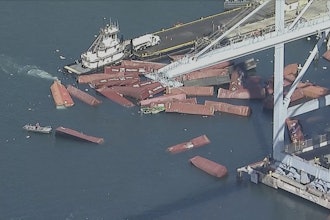There is a dynamic shift occurring in today’s risk environment. With reports showing a growing reliance on outside suppliers to drive corporate success, public demands for supply chain transparency are on the rise. Whereas, in the past, concerns were focused on aspects like asset management and regulatory practices, the watchful eyes of the end consumers are now placing added focus on the supplier’s workplace environments, including culture, harassment issues and the ethical sourcing of labor. For many of today’s consumers, they are more concerned about how their products are made as opposed to the final design or even use of the product. They want to know that they are supporting socially conscious companies, which they consider to be a critical part of a brand’s perception.
So it should come as no surprise that when supply chain issues arise, the company at the top of the chain is generally the one to take the reputational hit.
As risk managers, we need to understand the importance of actively monitoring and managing our supply chain risks. But accomplishing this feat is often much easier said than done. With that in mind, I tend to recommend that manufacturers address two critical areas in their supply chain risk processes. First, they must ensure that they have an established, and regularly maintained vetting process for onboarding new suppliers. Second, they must take the time to consider what risks could arise from their current slate of suppliers and establish proactive strategies to mitigate these risks. Let’s explore each of these in greater detail.
Create a Supply Chain Evaluation Process
Bad business relationships are easy to get into, and a nightmare to leave. Having a comprehensive supplier vetting process in place can help alleviate unwanted risk for your brand. Whether you currently have such a process in place, or are in the process of creating one, make sure you take the time to understand your potential suppliers and their business practices. At minimum, vetting processes should explore areas including funding, background checks, company culture, reputational history and even their economic climate — if operating in a foreign country.
In addition to looking at your supply chain operations, it is important to not overlook their supplier network as well. Because supply chains are often quite extensive, having an understanding of where your suppliers get their materials can help alleviate future risks. Don’t be afraid to actively examine the third, fourth, fifth and even sixth level of your supply chain. While extensive and time consuming in nature, the peace of mind and brand security that comes from a trusted supply chain network far outweighs the man hours required to conduct this analysis.
Lastly, remember that your supply chain evaluations should hardly be a one-time occurrence. Instead, your supply chains should be actively monitored to ensure they remain compliant and accountable. This means keep tabs of any changes that occur further down the supply chain and how they will affect your partnership, conducting regular checks on workplace culture to make sure they still meet your standards and actively communicating with your suppliers regarding any business issues they are experiencing.
Be Proactive in Your Mitigation Strategies
If you find yourself reacting to a risk, chances are your reputation is already in question. Thus being proactive is the key to mitigating your supply chain risks before they snowball into full brand nightmares.
One way to bring a proactive approach to your supply chain risk strategies is to better educate yourself on the common issues facing other companies. Take note of your competitors’ supply chain issues or general industry news and identify the strategies that make the most sense for your organization to combat these risks. Just because they aren’t your issues today does not mean they won’t be knocking on your door tomorrow. So ensure you are prepared for if or when they do.
Likewise, don’t be afraid to look at your history data to learn from prior risks that have plague your supply chain. Whether political unrest, management changes, or even human rights litigation, history is our best teacher for understanding what does and does not work with supply chain risk management. I encourage you to take the time learn from history and use this information to develop and fine-tune your risk management strategies. As history is often bound to repeat itself, having these strategies in place will ensure you are ready to get ahead of your supply chain risk.
Risk is Unavoidable, but it Doesn’t Have to be Crippling
While we can do our best to protect ourselves from supply chain risks, we must understand that these risks are often unavoidable. But what we can avoid is the amount of scrutiny that can affect our brands from these events. Thus, as risk professionals, we must work to have the strategies in place to mitigate supply chain risks wherever possible. If you haven’t already, I encourage you to make sure that supply chain risk processes are at the forefront of your 2018 strategy.
Quin Rodriguez is Vice President of Strategic Marketing at Riskonnect.



















